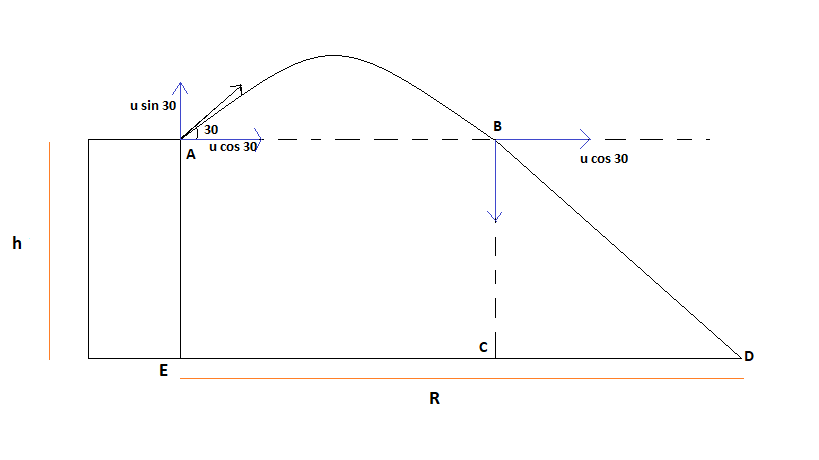A stone is projected from the top tower at an angle of 30 degrees to the horizontal with a velocity of 40m/s. It reaches the ground in 5 seconds. What is the height of the tower and the range of the stone using?
2 Answers
(a)
23 m
(b)
173 m
Explanation:
(b)
The horizontal component of velocity is constant so we can write:
(a)
I'll set the point of launch to be the origin and use the convention that "up is +ve".
We can use:
This becomes:
This means that the top of the tower is 23 m above the ground.
height of the tower =
Range of motion
Explanation:
Well,let's see the pathway of the stone i.e how it reached the ground,

So,it followed a projectile motion from
So,total time taken to reach the ground is = the time taken to complete the projectile motion + time taken to cover along the path
So,total time for projectile motion is given as,
where,
so putting
So,rest
Now,when the projectile reaches point
so,if the height of the tower is
putting,
So,in this total


